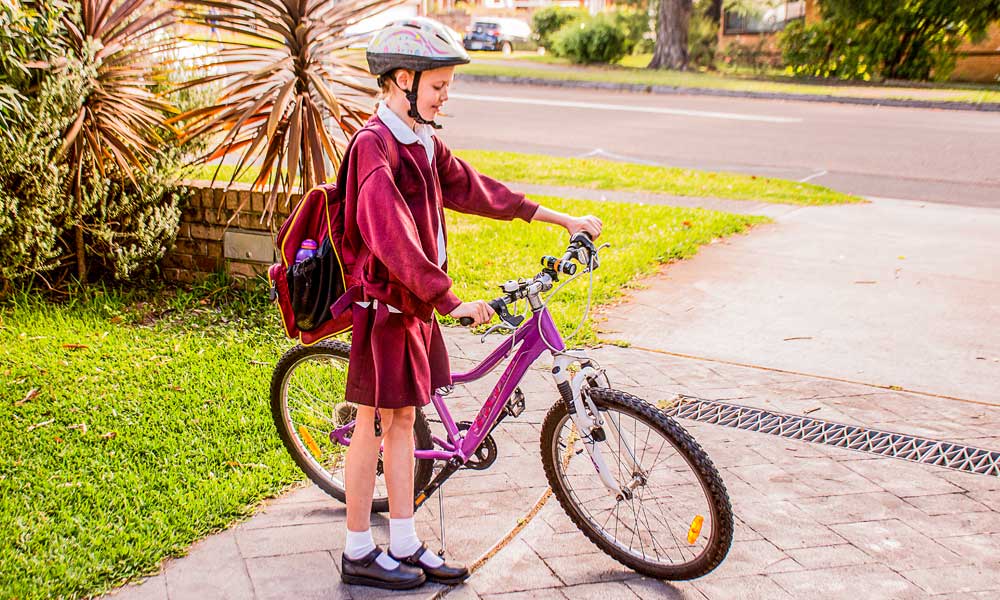In urban Japan, it’s common for small children to take the subway alone. Most Japanese parents let their kids travel to school independently when they’re as young as six or seven. In many European countries, children make their own way to school each day on foot or on their bikes, even at primary school age.
Research shows that encouraging kids to be active and catch public transport themselves helps them build social skills and problem-solving but letting a young child travel to school on their own is not something we do easily in our part of the world.
The fact is, at some stage children will want to travel to school on their own and for many parents, that’s a huge challenge. We know that unsupervised play and travel are important learning steps for children, and sometimes, trying to protect our children may do more harm than good. But why is it so difficult to let them go on their own, and what age is the right age?
Parents know best
Safety remains the paramount concern of all parents. In Japan for example, public spaces are designed with safety in mind. The country also has a low crime rate. More so, the freedom that Japanese parents allow their kids to go out alone is founded on the unspoken message to the whole community that they trust each other to take care of the children.
Many European cities also have highly efficient public transport and safe walking and cycling routes. Parents are more comfortable than we are with letting their kids travel to and from school by themselves.
Every child and every journey to school is different, so a ‘one age fits all’ approach doesn’t exist. At any age, children need pedestrian safety skills as well as tactics to avoid stranger danger. Children have different maturity levels, so parents are best placed to decide when they think their children are ready to take on that responsibility. It really is up to you and your best judgement.
If you have a 9-year-old who is cautious and pays attention to their surroundings, they may be ready to go to school alone. But if your child is easily distracted and isn’t likely to remember to look both ways before crossing a street, you may want to wait a little longer.
Benefits of letting your child walk to school independently
- It’s good exercise for your child.
- It limits your carbon footprint.
- You will save money on gas and car maintenance.
- They get bonding time with their friends and a chance to make new friends.
- It helps foster a sense of independence in your child.
Striking that balance right
We may want our babies to stay babies forever, but the truth is, they’re ready for independence sooner than we may think. By the time most children are 10 or 11, they should be capable of walking or cycling to school on their own, although it’s always best to try and introduce that independence slowly. There’s no way you’re going to set your child loose on the streets without a bit of prep work. Begin with small steps that both you and your child feel comfortable with.
Choose the safest route and take the route with your child several times before their first time walking or biking alone. Make sure that they are familiar with the area and know the way. Meeting your child halfway on the walk home for about a week is another option to make the transition easier.
If they can walk or bike to school with friends or an older brother or sister, let them try it one day and see how you feel. As much as we hate the idea of our kids being stuck to devices, if they’re going to be walking home alone, they’ll need a mobile phone. Just a simple phone that they can call and text you with will do the job.
Checklist for parents
- If they have a mobile phone, remind them to fully charge it before leaving the house, and make sure they have all your contact numbers saved.
- Talk to them about road safety. They should always look both ways before crossing the street, and never be on their phone whilst crossing a road.
- Ensure they understand that drivers may not see them, even if they can see the driver.
- Make sure they know their address and your telephone number by heart, in case they get lost or have to navigate home from somewhere new.
- When biking, make sure they wear bright-coloured clothing or something that will increase their visibility, such as a reflective armband or a high-vis vest.
- Remind them never get in the car with someone they don’t know and not to talk to strangers. They should never give anyone personal information away, in real life or online.
- Remind them that if they feel unsafe or uncomfortable at any time, they can call you or another trusted adult.
- If they ever feel like they’re in immediate danger, they should run to a safe place immediately and call the police straight away.
It will be a strange feeling that first time you let them go, watching their figures recede down the street and around the corner out of sight. On that first day, you may be tempted to follow them up the road, hiding behind parked cars, to see if they are okay. With the right tools, you can all feel more secure in your child taking major steps like this alone. Deep down, you know it will be just fine.
